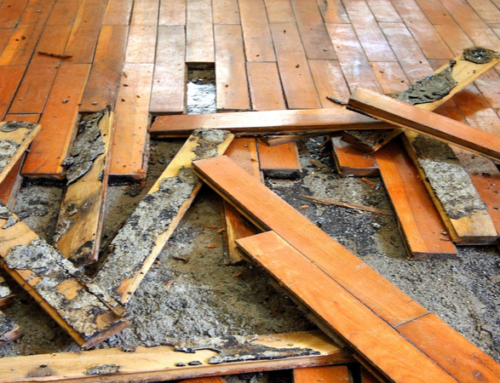Q: I purchased a home about five years ago. At the time, the seller did not reveal that there were any major problems with the house and claimed that the room additions had been completed with the proper permits.
A few months ago, I discovered the drywall was cracking in a major way and pulled up the carpet to reveal a major crack in the foundation that joins the old and new house. I also noticed that there was patching in the drywall, which had covered a previous crack there. The previous owner must have had the work completed.
Given that the previous owner had known about this issue, and that it turns out he didn’t pull the permits for the job, should I get an attorney involved?
My only concern is that this problem has become obvious now, five years after we purchased the house. Did the seller basically get away with this because of the time that it took me to find out what he covered up?
A: Saying that the seller got away with something might be a stretch. While the seller put on the addition, new construction cracks in drywall can be quite common, particularly when you join an existing structure with the new addition.
Just because he patched a drywall crack five years ago does not mean that the seller knew that there was a structural problem with the house. Apparently, your seller’s patching work lasted 5 years.
You have a crack in the foundation where the old meets new. You should talk to a foundation specialist to determine what the cause of the problem is and what you need to do to repair it. You may find that the crack is not serious and may only cause a cosmetic problem that may need repair from time to time.
Or, you could find that the foundation needs some serious repairs but that those repairs would be normal in a home of your type and age. Finally, you could find out that you have a major and serious problem on your hands and it will cost thousands of dollars to fix. Each of these situations can result in a different decision in determining a legal course of action.
If you can prove your seller knew of the problem and hid the problem, you may still be able to go after the seller. While most states have seller disclosure laws that require a seller to disclose to a buyer any material defect in the seller’s home, some of these laws also require that any action against the seller be brought against the seller within a certain period of time.
In some cases this time limit is one year. If you are beyond the time limit, you would have to review other options available to you under your state’s laws. Some of these options might be to sue the seller for fraud and misrepresentation, if the time limits for these types of actions have not expired.
Given your situation, you might have a hard time proving that the seller knew the crack was a material defect. In some cases, foundation problems don’t arise for many years. These foundation problems can be caused by a number of different conditions, including soil problems, settling and water problems.
Whether the foundation problem you have is as a result of a defect in the way the foundation was constructed will only be determined by your further investigation into your problem.
If you find that the solution to your problem will cost you $2,500 or less, your best move is to fix the problem and forget about suing your seller.
If you find that the solving your problem will cost you $50,000 and that the problem was caused by the seller or the seller’s contractors, you should hire an attorney to review your options.
But before you start paying an attorney’s hourly fee, you should first spend time figuring out what your problem is and what it will take to fix it. The only legal issue for you to determine is whether you are up against a time limit for going after the seller or the seller’s contractors for a defect in the construction.
You can research the time limit yourself or you can consult a litigation attorney in your state.
June 5, 2008.




Leave A Comment